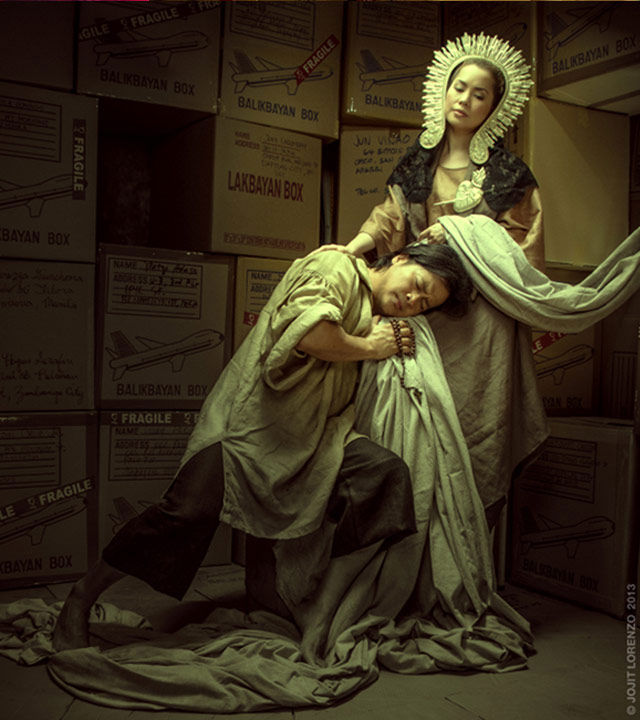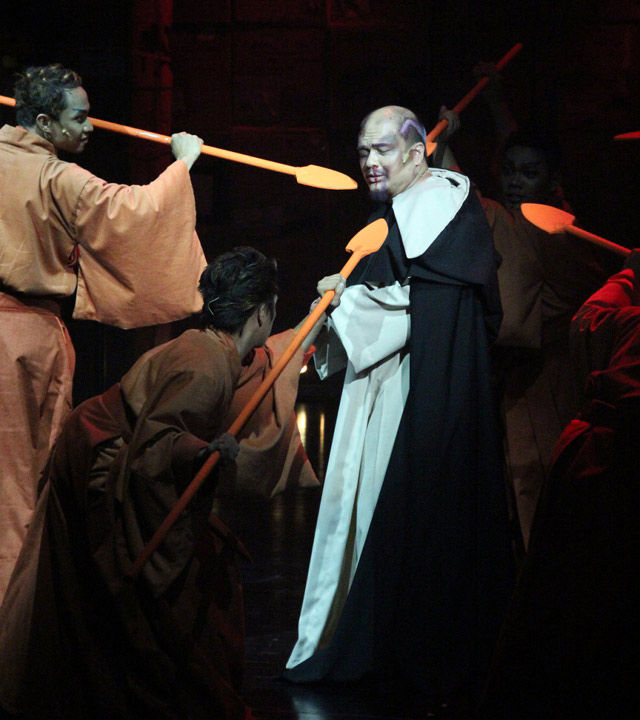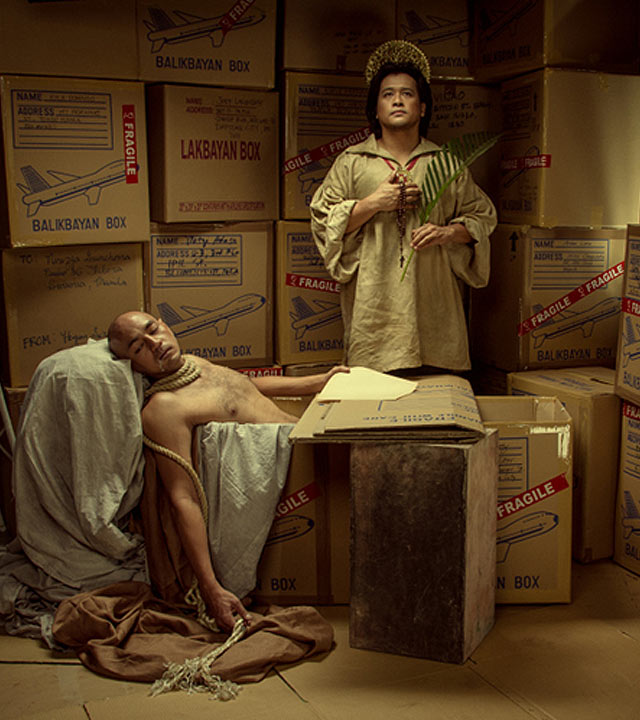SUMMARY
This is AI generated summarization, which may have errors. For context, always refer to the full article.

MANILA, Philippines – These are troubling times for the Roman Catholic Church. The issues are legion: A worldwide, decades-long pattern of attracting, protecting, and promoting sex offenders among the clergy; reccurring cases of corruption, scandal, and arrest at the Vatican Bank and other financial institutions run by the Church; and increasing irrelevance amid its failed opposition to reproductive health, women’s rights, gender equality, and sex education.
In the Philippines, many “pro-life” and anti-RH lawmakers whom the Catholic Bishops Conference of the Philippines backed and campaigned for in the last elections are now dragged into the alleged malversation of the billion-peso Priority Development Assistance Fund (PDAF) or pork-barrel fund.
The Church, in response, has resorted to public relations: photo opportunities and press releases of Pope Francis eschewing designer clothes and taking selfies with young pilgrims.
Then there’s Cardinal Luis Tagle, the Archbishop of Manila, coopting popular sentiment against the pork barrel fund and harping about the string of celebrity sex-video scandals on the internet.
There’s also “Lorenzo,” the Filipino-language rock opera on the life of Lorenzo Ruiz, first Filipino saint and patron of overseas Filipino workers (OFWs), who was martyred on September 29, 1637, in the course of an ill-fated mission to Christianize Japan during the Tokugawa shogunate.
“Lorenzo,” staged recently at the De La Salle-College of Saint Benilde School of Design and Arts Theater, is directed by the acclaimed Nonon Padilla and features the music of Ryan Cayabyab, with libretto by Juan Ekis, Paul Dumol, and Joem Antonio.
Gino Gonzalez, a genius at set and costume designs, was the production designer. Christine Crame of Ballet Philippines was the choreographer, and the show was produced by Christopher de Leon, veteran celebrity and devout Catholic, through his Green Wings Entertainment Network Inc.
READ: Christopher de Leon returns to theater

The rock opera’s stellar cast includes: Lorenz Martinez as Saint Lorenzo Ruiz; OJ Mariano as 21st century OFW, murder convict, and playwright Laurence; Juliene Mendoza as Dominican friar Antonio Gonzalez; Sheila Valderama alternating with Mayen Estanero as Ruiz’s wife Rosario; and Camile Lopez-Molina as a reporter covering Laurence’s story.
Post-modern, Brechtian
Lorenzo is a play within a play – a post-modern story wherein the artistic process that leads to the creation of the play becomes part of the story.
It is a Brechtian piece where the spell of suspended disbelief is broken, the “fourth wall” separating the stage and the audience is torn down, and theatergoers are intentionally reminded of the illusion that this is just a stage production with actors playing their parts.
It also plays homage to pop culture, from Akira Kurusawa’s “Rashomon” – with the audience left to speculate which version of events are real as they are narrated from the differing vantages of several characters – to gigantic humanoid robots similar to those found in anime such as Voltes V and recent movies such as Pacific Rim.
Laurence – once a theater artist in Manila and now an OFW awaiting his execution in the Middle East for the murder of an employer who raped him – finds his voice and his life story expressed through a Filipino journalist, who dutifully transcribes his ideas for a rock opera about Saint Lorenzo Ruiz, his namesake.
Like Laurence, Lorenzo has also killed a man, a Spaniard with whom he quarreled. To elude justice, Lorenzo pleads with Dominican friars to accompany them on a secret mission to minister to an underground Christian community in Japan, where the shogunate has banned Christianity as a foreign, colonial influence.
A scribe for the church, Lorenzo convinces the Dominicans of his usefulness to them on their journey to Japan. As in the movie “Rashomon,” the friars are left to speculate whether Lorenzo’s killing of a fellow Spaniard was an act of self-defense, a crime of passion, or a cold-blooded murder.
Alas, in Okinawa, Lorenzo must face his fate overseas like his 21st century namesake Laurence. He and the Dominican friars are discovered, jailed, and tortured. The shogun threatens them with death unless they renounce Christianity.
Enduring the torture, Lorenzo willingly goes to his death in 17th-century Japan. Laurence too is executed in the 21st-century Middle East. It is up to the reporter to bring the play to life in Manila.
Proven formulas
It is essential to appreciate “Lorenzo” in the context of its milieu. It is, like Saint Lorenzo Ruiz’s own martyrdom, a fervent attempt at evangelism. And it follows previous attempts at shoring up the Catholic religiosity in history.
A proven formula for bolstering the flagging faith is to give locals a saint of their own to rally behind.
In the 1980s, when droves of Catholics worldwide turned away from the Church and flocked instead to charismatic “born again” Christian movements, the late Pope John Paul II canonized a record-breaking 110 saints – more than 7 times the number of saints canonized by his 5 predecessors (and this not counting the 119 martyred companions of Saint Augustine Chao of Korea, all canonized in 2000).
Josemaría Escrivá, founder of the Opus Dei, was canonized in just 27 years after his death in 2002 (as opposed to the centuries it once took for canonization) in 2002. Among the multitude of local saints canonized by Pope John Paul II was Filipino Lorenzo Ruiz.
Francis continues this trend today, canonizing more than 800 saints since he became the vicar of Christ in March.
Another proven way to rally the faithful is through art and culture. In the 16th century when many of the wealthiest empires in Europe converted to Protestantism, the Catholic Church launched the Counter-Reformation. Besides instigating the brutal Inquisition, which saw thousands accused of heresy, tortured, and executed, and encouraging the cult-like devotion to Mary, the Counter-Reformation also thrived in Baroque art – a highly emotional, expressive, opulent cultural movement – the epitome of which are the paintings of Caravaggio and the sculptures of Bernini.
A more recent formula is to appeal to the youth. The annual World Youth Day, first initiated by Pope John Paul II in 1986, seeks to revitalize the Church by speaking to the youth in their language.
With this prism, one can better appreciate Lorenzo as a rock opera aimed at the youth to bolster their faith during these turbulent times by bedazzling them with song and dance and giving them a saint to glorify.
But just as one does not have to be a Muslim to savor the beauty of the Taj Mahal or a Hindu to be awed by Borobudur, “Lorenzo” is a joy to watch even for a skeptic who can savor its artistry without swallowing its evangelism hook, line, and sinker.
Spectacle with message
Lorenzo succeeds in wowing audiences with its impassioned singing and acting.
Martinez, Mariano, and Mendoza complement one another with their varying timbres and provide the much-needed brawn and pathos to hammer audiences with the message of redemption and sacrifice. For the performance of these 3 actors alone, this rock opera is worth watching.
The set and costume designs by Gonzalez are the works of a genius. Everything evokes the OFW life as well as the pop-culture fascination with all things Japanese. The set is comprised of walls of balikbayan (Filipino returnee) boxes stacked upon one one other, some of which are thrown about to reveal characters.
Japanese costumes consist of kimonos made of denim – de rigueur clothing among OFWs – and printed with the markings of balikbayan boxes. Dogs are represented by cutouts attached to baggage strollers.
And then there’s the towering robot that enters during the passion of Lorenzo Ruiz. The lighting by Jon Jon Villareal flawlessly complements Gonzalez’s designs.
However, the appearance of the robot, as impressive as it is, seems gratuitous. One finds it hard to justify it as essential.
The lengthy lyrics seem shoehorned into the songs. Even the dialogue seems wordy. One couldn’t help but note that at times, moments of stark silence and stillness, like those in a Noh play, could convey so much more than a wealth of impassioned words.
Cayabyab’s songs, like those in traditional opera, are through-composed and non-repetitive. They have the catchy hooks one expects from a master songwriter. But it is the songs in the final act that have most recall.
The rock opera has two endings because, as Padilla explained to journalists after the premier performance, it is a play within a play. But to audiences who watch without the benefit of this explanation, it may simply seem dragging.

More disturbing is how the tone and feel of the play drastically changes in the final act. It becomes campy, with gay lingo entering the dialogue.
This seems out of character for the work of its playwright, condemned OFW Laurence, despite his stated theater experience in Manila. There is nothing in Mariano’s portrayal that foreshadows this aspect of his character.
Once again, Padilla explains this as breaking the spell of suspended disbelief and waking the audiences to the illusion of theater – that this is Padilla’s work and not that of the fictional Laurence. But again, this creative decision is not self-explanatory.
Despite these inconsistencies and indulgences, one leaves “Lorenzo” realizing it’s a must-see rock opera. Leave dogma behind and enjoy the music and the drama. – Rappler.com
Stylized photos courtesy of Green Wings Entertainment. Photos shot during the show by Rome Jorge.
Add a comment
How does this make you feel?




There are no comments yet. Add your comment to start the conversation.